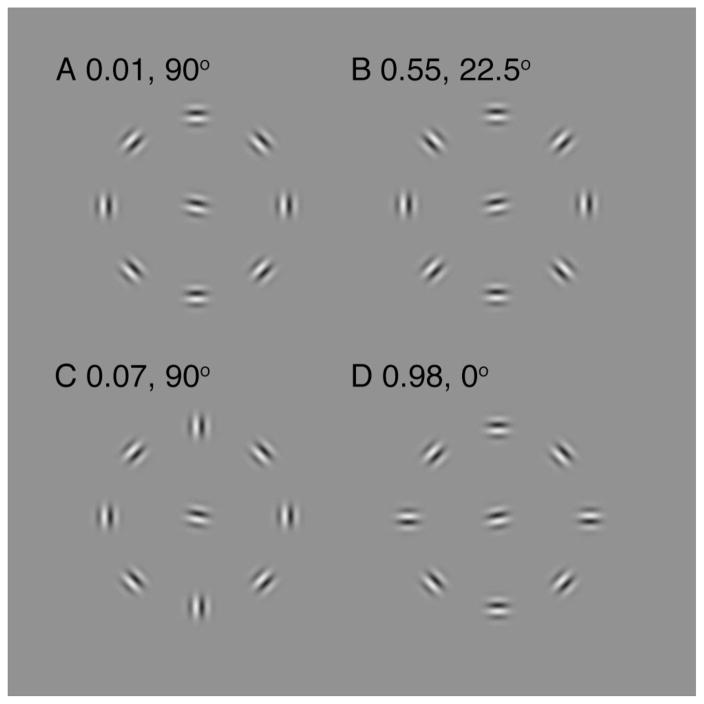Figure 7. Livne and Sagi (2007) stimuli (A, B, C, D) with log threshold elevation (measured by them) and wiggle (measured by us).
Each stimulus consists of eight flanker gabors arranged in a circle around a target gabor. While fixating to the left or right of the stimulus, the task is to determine whether the central target is tilted clockwise or counterclockwise from horizontal. The configuration of the flankers was manipulated: A. all flankers group into a contour; B. the contour was interrupted at every other location; C. contour interrupted only at top and bottom; D. contour interrupted only at left and right. In these stimuli the target lies on a straight path with each pair of diametrically opposed gabors. We compute the wiggle of each of these gabor triplets in each of these configurations as a predictor of how well the target will bind with that pair of flankers. For each stimulus, we list the log threshold elevations and the lowest of the 4 wiggles. The two numbers reveal a reciprocal relation between log threshold elevation and minimum wiggle.
Livne and Sagi proposed that grouping flankers into a contour reduces crowding. As predicted, configuration A does not show any crowding, and B does. We averaged the observers’ log threshold elevations for these configurations: with low contrast stimuli, average threshold elevation for A is 0.01±0.03 log units, and for B is 0.55±0.04 log units (n=2); threshold elevations for high contrast stimuli were similar (A 0.06±0.1, B 0.72±0.17; n=3). Their hypothesis predicts no difference in performance between configurations C and D. Our hypothesis is that the target is crowded whenever the target and flankers are grouped (aligned), regardless of grouping among flankers. Like theirs, our hypothesis correctly predicts much less crowding in A than in B. However, unlike theirs, our hypothesis predicts no crowding in C and strong crowding in D. In fact, this is what Livne and Sagi found (threshold elevation C 0.07±0.04, D 0.98±0.12; n=1). Furthermore, configuration D (although it is interrupted in only two locations) showed the highest threshold increase of all configurations. Our hypothesis predicts this as well, since the alignment of the target with flankers is best in this configuration.

